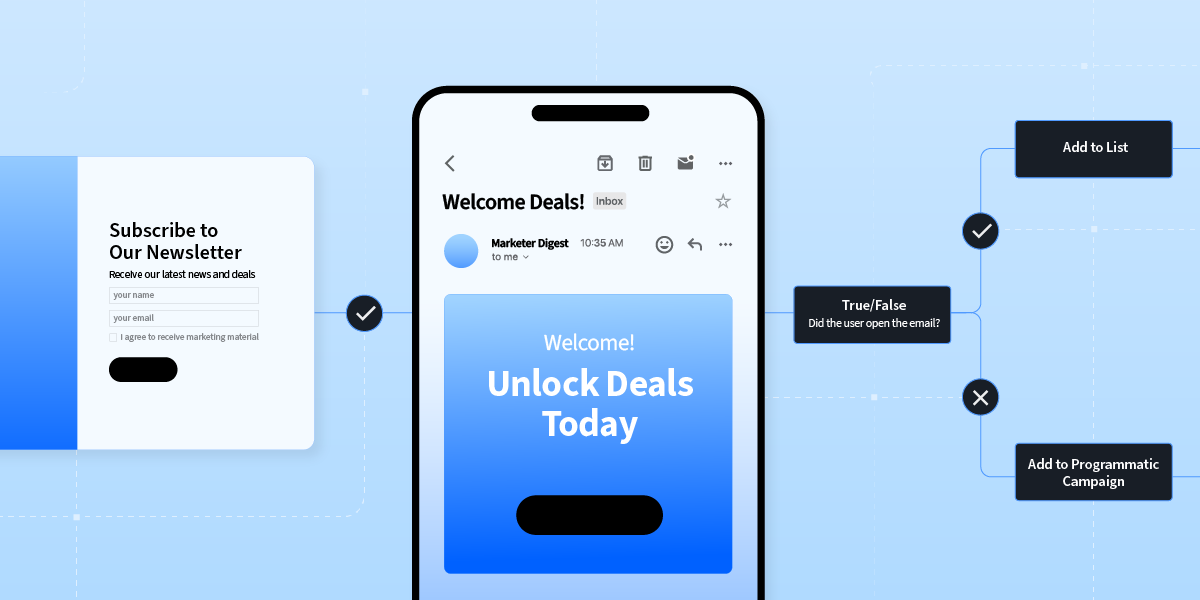Unlocking Martech Maturity: A Strategic Framework for Modern Growth

TL;DR – Unlocking Martech Maturity
- Most martech maturity models fall short by focusing on tools rather than outcomes, resulting in bloated stacks and operational inefficiencies.
- MarTech Maturity Debt is the hidden cost of inefficient systems, bad data, manual workflows, and redundant tools. It quietly stifles growth.
- There are four key types of maturity debt to watch for: integration, data, process, and vendor. Each one drains ROI and slows down execution.
- Real maturity is characterized by balance, not tool count: integrated systems, clean data, automation, clear ownership, and measurable performance.
- To reduce debt, leaders should audit their stack, prioritize fixes based on impact versus effort, align technology with strategy, and track business-driven KPIs.
- People power the process—strong team structure, ownership, and strategic support matter more than platform features alone.
- The goal isn’t more tools—it’s better outcomes. Simplify, streamline, and focus on velocity, clarity, and growth.
Martech maturity models are ubiquitous, yet most still focus on tools rather than what drives real growth. Increasing stack complexity is eroding ROI and muddying operations. In fact, the martech landscape has ballooned to over 15,000 tools in 2025. But more choice doesn’t necessarily translate to better results.
Hidden beneath this avalanche of platforms lies what’s called martech maturity debt. It’s the accumulated drag, from duplicated tools and messy data to manual processes and weak governance, that noticeably restricts revenue and agility. By targeting this debt, leaders can turn scattered investments into meaningful, measurable returns.
This article will walk you through:
- A fresh, outcome-driven lens for evaluating maturity.
- The key maturity challenges many organizations face.
- A practical, four-step playbook for reducing debt and accelerating growth.
Ahead is a guide for taking stock of your current state, identifying what holds you back, and building a platform that delivers velocity, clarity, and measurable impact, without drowning in complexity.
Why the Old Martech Maturity Models Fall Short
Most traditional martech maturity frameworks rely on static “checklist” thinking; they measure success by how many tools you own or which features you use. The problem: they treat stacks like trophies rather than dynamic engines. That’s why frameworks often miss operational drag and the costs tied to poor decision-making.
Models rarely explore how duplicative tools or half-baked integrations slow down teams and increase error rates. KPMG reports that organizations only leverage around 42% of their martech capabilities while continuing to invest in more platforms. This choice often results in overlapping functions and inconsistent customer data, yet rarely triggers a pause to re-evaluate.
These frameworks miss the cumulative impact of slow campaigns, manual workaround cycles, and decision fatigue. Without factoring in “maturity debt,” companies can end up with sprawling, underutilized ecosystems that demand support, training, and coordination, without delivering ROI.
Winning businesses don’t thrive by stacking tool upon tool, but reduce friction instead. That means solving for integration, data quality, and operational efficiency first. Only then can new capabilities drive velocity and scale, rather than create complexity for complexity’s sake.
What Is Martech Maturity Debt?
Martech maturity debt refers to the hidden costs and friction that accumulate in a marketing technology setup over time. It’s a lens to quantify the real price of inefficiencies, so you can target strategic fixes, recover wasted spend, and steer clear of future impediments. Martech maturity debt includes:
- Manual workarounds: Teams stitching systems together with Excel or scripts because integrations fall flat.
- Bad data: Inaccurate or siloed data that misleads decision-makers and undermines personalization efforts.
- Tool overlap: Multiple platforms covering the same capability, confusing workflows and inflating licensing costs.
In fact, Gartner reports that marketing teams only leverage 33% of martech capabilities, while up to 25% of the budget goes to tools that are underused or redundant.
In practice, this is what martech maturity debt looks like:
| Hidden friction | What it costs | Business impact |
| Duplicate audience segments | Extra fees + confusion among teams | Campaigns overspent, budget wasted |
| Manual reporting | Analyst hours lost to brute work | Slower decisions, more missed windows |
| Patchwork integrations | Engineering support ballooning | Frequent breakdowns, delayed launches |
These issues quietly erode ROI. Most organizations underutilize their stacks while racking up duplication and poor integrations. That’s maturity debt at work: leakage that stifles velocity and undermines performance.
Applying the maturity debt framework lets you see where tools are causing drag, weigh the cost of fixes versus continued pain, and target improvements where they’ll deliver the biggest ROI. It becomes less about buying more, and more about making your stack faster, smarter, and better aligned with real business outcomes.
The 4 Types of Martech Debt to Watch For
Modern martech stacks hide four silent drains that limit agility, waste money, and block growth. Spotting and addressing each one is key to advancing maturity.
1. Integration Debt
When connections between tools are brittle or improvised, they become a liability. These manual, fragile integrations demand constant fixes and custom scripting. For instance, teams forced to build dual integrations—first directly from an email service provider (ESP) and then a customer data platform (CDP)—end up paying double in labour and incurring delays. Integration debt increases downtime, slows launches, and eats into development capacity.
2. Data Debt
Bad or siloed data undermines trust and decision-making. Fragmented customer profiles, semantic inconsistencies across teams, or outdated records lead to poor personalization and inefficient campaigns. According to a recent analysis, inconsistent definitions of customer metrics, like “active customer,” can sabotage AI and automation efforts. Data debt not only erodes ROI but also puts the business at risk of misleading leaders with flawed insights.
3. Process Debt
Manual workflows slow progress and introduce errors. Without reliable automation, teams rely on spreadsheets and piecemeal workarounds. This holds back marketers, making campaigns slower, less accurate, and more frustrating. Excess process debt means every launch costs more time, team bandwidth, and opportunity.
4. Vendor Debt
Licensing unused tools or running overlapping platforms inflates costs and fracturing workflows. Adobe research highlights this: 20%–40% of IT budgets get consumed by managing neglected tools, and 44% of SaaS licenses go unused. Vendor debt slows teams by forcing them to navigate a maze of dashboards, contracts, and support channels, while generating little real value.
Why These Matter Strategically
Each type of martech debt chips away at business performance—and more importantly, growth potential.
- Missed launch windows mean fragile systems or manual approvals slow your speed to market, allowing competitors to move first.
- Wasted budget from redundant tools drains resources that could be used for innovation or scaling proven channels.
- Revenue leakage from poor data quality leads to generic targeting, missed personalization, and ultimately lower lifetime value (LTV).
Unchecked, these issues compound. But tackling them head-on opens the door to faster execution, sharper decision-making, and stronger customer relationships—all of which fuel sustainable growth and ROI.
What Martech Maturity Really Looks Like
Moving past a checklist mentality requires embracing balance across five strategic dimensions. This is what true mature martech looks like:
1. Integrated Stack
A mature stack features seamless connections among platforms (CDPs, CRMs, DSPs, analytics systems), eliminating fragile point-to-point setups. Organizations with deeply integrated systems launch campaigns three times faster and realize ROI within weeks rather than months.
2. Actionable Customer Data
It’s not enough to gather data—you need trust and usability. Mature organizations unify customer signals into consistent profiles, keeping data clean and current. Tools like CDPs that consolidate multi-channel interactions help reveal predictive insights and drive performance across channels.
3. Agile, Automated Workflows
High-maturity teams automate manual tasks, minimizing errors and reducing time-to-market. AI-powered automations like dynamic creative optimization, real-time bidding, and predictive optimization take over repetitive tasks, freeing marketers to focus on strategy.
4. Clear Team Ownership
Structures matter. Success requires defining responsibility across roles, from technical leads to marketing ops and data stewards. Leadership alignment and cross-functional accountability are essential to avoid internal bottlenecks that stall progress.
5. Campaign Velocity + ROI
Ultimately, maturity shows in results. High-performing stacks deliver fast campaign launches, smarter media ROI, and continuous learning loops. Richer automation and better data translate into measurable business outcomes, more conversions at lower acquisition cost and shorter time between insight and activation.
A 2024 report by Userpilot found that martech tools have an average time-to‑value of 1 day, 20 hours, 47 minutes, highlighting how inefficient integrations and manual onboarding can significantly delay impact.
StackAdapt’s platform exemplifies this modern lens on maturity:
- Built-in integrations across data, DSP, and CDP systems create a unified stack that reduces fragile touchpoints.
- AI-driven optimization automates creative testing, bidding, and audience targeting, delivering speed without sacrifice.
- Robust governance and ownership let technical and marketing teams work in tandem, from data planning to campaign execution.
By aligning tools, teams, and data around outcomes, not just features, StackAdapt enables leaders to track maturity through velocity metrics and ROI benchmarks.
A Process for Paying Down Martech Debt
Reducing martech maturity debt calls for a clear and repeatable four-step playbook. This approach helps businesses move intentionally, rather than slashing tools or processes haphazardly.
Step 1: Commission a Strategic Audit
Direct your teams to inventory every platform, integration, workflow, and owner, then map them to their supported business outcomes. Senior leaders should sponsor this with a clear mandate: measure the value contribution of each element, not just its existence.
Push teams to ask:
- Which tools directly drive revenue or efficiency gains?
- Which systems could be shut down tomorrow with minimal disruption?
- Which integrations represent risk exposure?
Your role is to ensure audits happen routinely (tied to renewal or budgeting cycles) to guard against silent tech bloat.
Step 2: Prioritize by Business Impact vs. Effort
Every fix requires time, budget, and focus, so leaders should insist on an impact-versus-effort analysis to guide the allocation of resources.
Start with quick wins, such as retiring redundant tools that add complexity without providing value. Bigger, high-impact moves might include unifying fragmented data sources into a single CDP.
The key is to keep teams aligned by tying each priority to a clear business outcome, whether that’s faster time-to-market, better margins, or deeper customer loyalty.
Step 3: Tie Technology to Business Strategy
As a senior leader, push your teams to align technology decisions with business growth priorities. Strategy should drive tool selection, not the other way around.
If speed is the goal, prioritize platforms that support rapid testing and iteration. If the focus is on personalization, invest in improving data quality and accessibility.
Don’t get distracted by flashy vendor demos. Ask for clear business cases tied to metrics that matter, like revenue per customer, campaign ROI, or time-to-value.
Step 4: Measure Maturity Using Business Metrics
Traditional maturity “scores” are too abstract for the boardroom. Insist on KPIs that translate to shareholder value, such as:
- Time-to-market improvements
- Reduction in manual tasks through automation
- ROI lift or customer acquisition cost reduction
This way, progress is tangible, defensible, and aligns directly with executive dashboards.
| KPI | What it measures | Why it matters |
| Speed of Experimentation | Time from test idea to actionable result | Accelerates learning loops and campaign innovation |
| AI-Training Readiness | Quality and volume of clean, tagged 1st-party data | Fuels effective AI models and personalization strategies |
| Percentage of Automated Touchpoints | Proportion of marketing actions handled by automation | Indicates process maturity, reduces time-to-launch and manual effort |
| Tool Adoption Rate | Percentage of purchased tool features actively used by teams | Flags underutilized platforms and potential cost savings |
| CLV:CAC Ratio | Customer lifetime value divided by acquisition cost | Reveals the efficiency and profitability of data-driven targeting and retention |
Why People Still Power Martech
Even the most advanced platform can’t fix fractured teams or missing accountability. That’s why team structure and shared ownership remain vital:
- Cross-functional teams bring together marketing ops, analytics, IT, and creative under a unified objective. Without this collaboration, new tools exacerbate silos and data confusion.
- Clear role definitions—from data stewards to campaign owners—help avoid drop-offs. When everyone knows who owns integrations, data, or reporting, progress doesn’t stall on “that thing that no one owns.”
- Continuous alignment ensures your stack evolves alongside priorities, not in isolation. Martech maturity is a practice, not a milestone.
StackAdapt supports this people-first approach. Beyond its technically robust platform, clients benefit from expert guidance, from strategic planning to hands-on implementation. That human-led support shepherds teams through change, helping them think ahead and tie martech decisions to business objectives.
Leaders who treat martech maturity as an ongoing, team-powered journey, anchored by clear governance and strategic insight, make faster progress. Technology amplifies performance. But people drive it.
Martech Maturity Isn’t About More. It’s About Better.
The leaders breaking away from the pack aren’t those who accumulate the most tools—they are the ones who simplify, streamline, and focus relentlessly on metrics that matter.
- Simplicity trumps complexity. Fewer tools, thoughtfully connected, reduce cognitive load and management overhead. Maturity means trimming redundancy and plugging quality gaps—not buying more tools.
- Streamlined workflows = faster time‑to‑market. When your stack is lean and integrations hold, teams move swiftly from concept to launch. Measurable campaign velocity becomes your competitive edge.
- Measure what matters. Track true value: launch speed, percent of automated tasks, ROI per campaign. These indicate progress in maturity and give leaders actionable insights, rather than vague, tool-based checkboxes.
StackAdapt delivers a full maturity framework aligned with strategic outcomes:
- Purpose-built stack integrations, including real-time Shopify integrations and unified data across CDP and analytics.
- AI-fueled workflow automation, from creative optimization to bidding and targeting.
- Expert guidance, offering strategic planning and operational support—because no transformation succeeds without team alignment and human insight.
If you’re ready to transform maturity from a static goal into a dynamic practice—one that consistently pushes velocity, clarity, and ROI—explore StackAdapt’s maturity framework and tools. Get in touch today.
Executive FAQs on Martech Maturity
Unchecked stack complexity siphons up to two‑thirds of martech budgets into underutilized tools, fractured workflows, and duplicated efforts, leaving executives with wasted spend and sluggish campaigns.
Low maturity stalls time‑to‑market and personalization, both essential to customer loyalty and LTV. Worse, poor data quality reduces targeting accuracy, resulting in missed sales and weakened ROI.
Because inertia in your tech stack amplifies opportunity cost: every day without streamlining is a day competitors may launch ahead, while your organization overpays for redundant systems that don’t deliver value.
Nearly all organizations carry some debt—60% of martech projects miss ROI expectations, and tool utilization hovers around 33%. Applying an impact‑effort prioritization and automating recurring tasks can yield measurable ROI in as little as one quarter.
Track these business‑forward KPIs: Time‑to‑launch (speed from plan to live campaign); percentage of automated workflows (versus manual hand‑offs); and campaign ROI or revenue per customer. Seeing improvements in these numbers offers clear proof of martech maturity.
Technology can offer potential, but maturity needs governance, team alignment, and strategy. That’s why platforms like StackAdapt pair tech with domain expert support—planning, execution and refinement—with real business lens at every step.
Actually, no. A BCG study shows marketing maturity declined 8% from 2021 to 2024, largely due to increased complexity and rising expectations. The bar is higher, and debt is harder to ignore.







